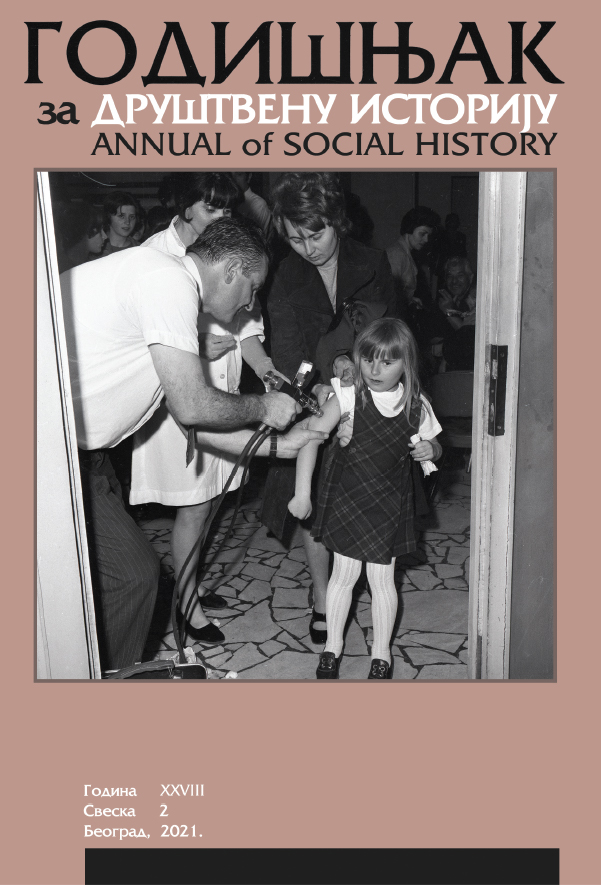Вариола вера у Jугославији 1972. године: историја одоздо
Variola Vera in Yugoslavia 1972: History from Below
Author(s): Radina VučetićSubject(s): Social history, Post-War period (1950 - 1989)
Published by: Udruženje za društvenu istoriju
Keywords: variola vera; smallpox; Yugoslavia; 1972; “history from below”; epidemics
Summary/Abstract: In the spring of 1972, Yugoslavia experienced a smallpox virus outbreak, which, as it turned out, was the last European epidemic of this deadly disease. The epidemic included 25 hotspots, eventually infecting 175 persons, with 35 fatalities. Many people were involved in the control and suppression of the epidemic – state and civil servants, healthcare workers, and many others, for history usually “invisible” actors. Considering that the suppression of the epidemic of smallpox in Yugoslavia in 1972 was a collective effort, it is necessary to include the view “from below” to fully comprehend the scope of this endeavor and understand various dimensions of this epidemic. Only the view “from below” enables a better comprehension of the whole range of phenomena important not only for understanding how Yugoslavia fought the smallpox epidemic of 1972 but also for considering its broader context. The epidemic suppression was a collective effort in which healthcare workers had the most critical role. However, besides leading epidemiologists and doctors, equally important were nurses and medical technicians and “ordinary people”, waitresses and waiters, cleaners, ambulance drivers, schoolchildren, police officers, and one pub singer. Only with the inclusion of their voices, the history of the most significant health crisis in socialist Yugoslavia becomes multidimensional and acquires “a new aspect of humanity”.
Journal: Godišnjak za društvenu istoriju
- Issue Year: XXVIII/2021
- Issue No: 2
- Page Range: 27-42
- Page Count: 16
- Language: Serbian

